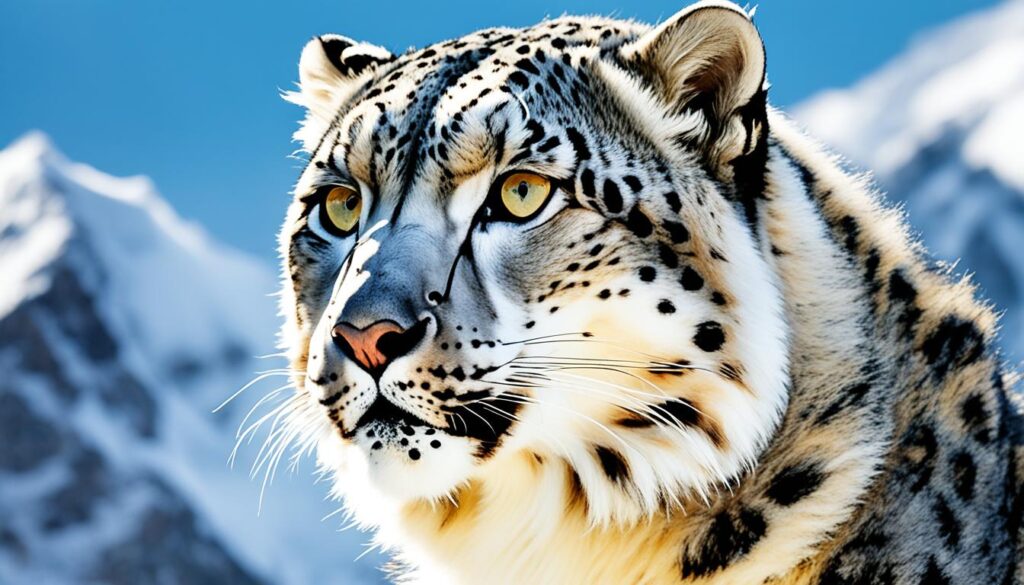If you think of Nepal purely as a land of majestic mountains and breathtaking landscapes, you may be surprised to learn that it is also home to a remarkable array of wildlife. With its varied climate and diverse ecosystems, Nepal boasts an impressive range of animal species, making it a true paradise for nature lovers and wildlife enthusiasts. From endangered species to thriving national parks, Nepal’s commitment to conservation efforts has helped protect its unique biodiversity.

Key Takeaways:
- Nepal is renowned for its wildlife diversity, thanks to its wide range of climate zones and varied ecosystems.
- Wildlife tourism plays a significant role in Nepal’s economy, attracting visitors from around the world.
- Nepal’s national parks and reserves are vital for conserving endangered animal species and their habitats.
- The country is a biodiversity hotspot, offering diverse ecoregions and unique flora and fauna.
- Nepal’s rich wildlife and biodiversity highlight the importance of continued conservation efforts and support for animal welfare organizations.
National Parks and Conservation Efforts in Nepal
Nepal has taken significant steps to protect its rich fauna by establishing national parks and reserves under the National Parks and Wildlife Conservation Act. These protected areas are vital in preserving endangered species and contributing to conservation efforts in Nepal.
The country has implemented four different classes of protection, including:
- National parks
- Wildlife reserves
- Conservation areas
- Hunting reserves
As of 2002, Nepal had a total of 23 protected areas, consisting of nine national parks, three wildlife reserves, three conservation areas, one hunting reserve, three Ramsar sites, and four World Heritage Sites.
Notable World Heritage Sites in Nepal include Sagarmatha National Park and Chitwan National Park. These protected areas are crucial in safeguarding the country’s unique biodiversity and ensuring the survival of endangered species.
To gain a deeper understanding of the diverse national parks and protected areas in Nepal, refer to the table below:
| Park/Reserve | Designation | Location |
|---|---|---|
| Sagarmatha National Park | National Park | Eastern Nepal |
| Chitwan National Park | World Heritage Site | South Central Nepal |
| … | … | … |
By safeguarding these national parks and reserves, Nepal demonstrates its commitment to the conservation and preservation of endangered species and their habitats. It provides visitors with the opportunity to witness the country’s remarkable wildlife while supporting responsible tourism and ecological sustainability.
Mammals of Nepal
Nepal is home to a rich diversity of mammal species, including many unique and endangered animals. The country’s varied geography provides a range of habitats that support a wide array of mammalian life. From the lush forests of the Terai lowlands to the rugged mountains of the Himalayas, Nepal’s mammal population is both diverse and captivating.
Notable Mammals Found in Nepal
Some of the most noteworthy mammals found in Nepal include:
- Bengal fox: A small carnivorous mammal known for its distinctive reddish-brown fur.
- Bengal tiger: The iconic big cat species known for its strength and beauty.
- Clouded leopard: A stunning feline with unique cloud-like markings on its coat.
- Asiatic lion: A majestic species once found throughout Asia but now restricted to a small population in India.
- Asiatic elephant: An enormous land mammal that is revered and protected in many cultures.
- Red panda: A charming and elusive creature known for its vibrant red fur and bushy tail.
- Snow leopard: A highly endangered big cat species adapted to life in the harsh mountainous regions.
- Tibetan wolf: A species of wolf found in the high-altitude regions of Nepal and surrounding areas.
These mammal species, among others, contribute to the stunning wildlife diversity in Nepal. However, many of them are facing significant threats and are classified as endangered.
Endangered Mammals in Nepal
The endangered mammal species in Nepal include the:
- Snow leopard
- Asiatic lion
- Asiatic elephant
These species are at risk due to factors such as habitat loss, poaching, and human-wildlife conflict. Efforts are being made to conserve these iconic mammals and their habitats.

Mammals in Different Regions of Nepal
Nepal’s diverse ecosystems support various mammal species across different regions. Here are a few examples:
| Region | Notable Mammals |
|---|---|
| Manang | Snow leopard, Tibetan wolf, Himalayan tahr |
| Langtang National Park | Red panda, Himalayan black bear, gray langur |
| Annapurna Conservation Area | Asiatic elephant, Bengal tiger, Indian leopard |
These regions provide unique opportunities for wildlife enthusiasts to witness these majestic mammals in their natural habitats.
Nepal’s commitment to wildlife conservation and habitat preservation is essential for the continued survival of these remarkable mammal species. By raising awareness and supporting conservation efforts, we can contribute to the protection of Nepal’s wildlife heritage.
Reptiles and Aquatic Fauna of Nepal
Nepal is home to a diverse array of reptiles and a fascinating aquatic fauna. The country’s varied ecosystems provide a habitat for a wide range of unique species.
Reptiles in Nepal
Nepal is a haven for reptile enthusiasts, with a variety of reptile species calling the country their home. Among these, the Bengal monitor, pit vipers, and monitor lizards are some of the most iconic reptiles found in Nepal.
Additionally, Nepal is home to unique reptile species that can only be found within the country’s borders. Notable examples include the Sitana fusca and Cyrtodactylus nepalensis.
Aquatic Fauna in Nepal
The water bodies of Nepal are teeming with a diverse array of aquatic fauna. From shimmering catfish to elusive snowtrout, the aquatic ecosystems offer a fascinating glimpse into Nepal’s rich biodiversity.
Various species of catfish and snails can be found in Nepal’s rivers, lakes, and wetlands, adding to the remarkable aquatic fauna. One unique species that deserves special mention is the blind Ganges river dolphin, a rare freshwater dolphin found in Nepal’s rivers.
Endangered Reptile Species in Nepal
Unfortunately, some reptile species in Nepal are endangered and require conservation efforts to protect their existence. The Bengal monitor and the golden monitor are among the reptile species facing threats in their natural habitats.
To shed more light on these endangered reptile species and their conservation status, let’s take a look at the table below:
| Reptile Species | Conservation Status |
|---|---|
| Bengal Monitor | Endangered |
| Golden Monitor | Endangered |
It is essential to protect these endangered reptile species through conservation efforts and promote awareness about their importance in maintaining a balanced ecosystem.
To learn more about Nepal’s reptiles and aquatic fauna, make sure to explore the other sections of this article.
Avifauna of Nepal
Nepal is known for its rich avifauna, with a diverse array of bird species that inhabit its varied landscapes. With over 900 species recorded, Nepal offers a haven for bird enthusiasts and nature lovers alike. The country’s abundant birdlife can be attributed to its geographical diversity, which ranges from the lowland Terai region to the high Himalayas.

Of the numerous bird species found in Nepal, approximately 30 are globally threatened, highlighting the importance of conservation efforts to protect these vulnerable populations. Nepal boasts around 27 Important Bird Areas, designated regions that are crucial for the survival and breeding of various bird species.
The national bird of Nepal is the danphe, also known as the Himalayan monal, a dazzling pheasant species renowned for its vibrant feathers. The spiny babbler holds the distinction of being the only bird species endemic to Nepal, meaning it is found nowhere else in the world.
Other notable bird species in Nepal include storks, pheasants, minivets, cuckoos, flycatchers, and warblers. These avian residents can be spotted in a variety of habitats, including national parks, protected areas, and even urban environments.
Bird Species in Nepal
To provide a glimpse of the diverse birdlife in Nepal, here are a few notable species:
- Bengal Florican
- Rufous-necked Hornbill
- Satyr Tragopan
- Himalayan Griffon
- Siberian Rubythroat
These are just a few examples of the many captivating bird species that call Nepal home. Birdwatchers and photographers flock to the country to witness rare sightings and capture the beauty of these feathered creatures.
Birdwatching in Nepal
Nepal offers unparalleled opportunities for birdwatching. Several national parks and protected areas serve as habitats for a wide range of avifauna. Some popular birdwatching destinations in Nepal include:
- Chitwan National Park
- Langtang National Park
- Koshi Tappu Wildlife Reserve
- Shivapuri Nagarjun National Park
Birdwatching enthusiasts can explore these natural habitats and engage in memorable encounters with Nepal’s avian residents. Dedicated bird guides and local experts are available to provide insights and enhance the birdwatching experience.
| Common Name | Scientific Name | Conservation Status |
|---|---|---|
| Danphe (Himalayan Monal) | Lophophorus impejanus | Near Threatened |
| Spiny Babbler | Turdiodes nipalensis | Endangered |
| Rufous-necked Hornbill | Aceros nipalensis | Near Threatened |
| Bengal Florican | Houbaropsis bengalensis | Critically Endangered |
| Satyr Tragopan | Tragopan satyra | Vulnerable |
Flora of Nepal
Nepal is known for its diverse and rich flora, with over 5,000 documented species. The country’s varied geography, ranging from lowland plains to Himalayan peaks, contributes to the incredible variety of plants found in Nepal. The flora not only adds beauty to the landscape but also plays a crucial role in supporting the country’s wildlife.
In the Terai region of Nepal, which encompasses the lowland plains, you’ll find a wide range of flora, including hardwood, bamboo, palm, and sal trees. These trees provide important habitats for various animal species and contribute to the overall ecosystem balance. The dense forests of this region support a range of wildlife, including elephants, tigers, and rhinoceros.
Rhododendrons are one of the most prominent and breathtaking plant species found in Nepal. With their vibrant colors, they add a touch of magnificence to the country’s landscape. The red rhododendron, in particular, holds special significance as the national flower of Nepal. These beautiful flowers can be found throughout the country, especially in the higher elevations.
Endemic Plant Species in Nepal
Nepal is home to over 400 species of endemic vascular plants, which are plants found only in specific regions and nowhere else in the world. These endemic plants are a testament to the uniqueness of Nepal’s ecosystems and are crucial for maintaining the country’s biodiversity. Orchids, such as Pleione coronaria and Oreorchis porphyranthes, are among the endemic plant species found in Nepal. These delicate and fascinating flowers add to the enchanting beauty of the country’s flora.
Here is an overview of some of the stunning endemic plant species in Nepal:
| Endemic Plant Species | Image |
|---|---|
| Pleione coronaria | |
| Oreorchis porphyranthes |
These endemic plant species are a treasure of Nepal’s natural heritage and underline the importance of preserving and protecting the country’s flora. They are a testament to the country’s commitment towards biodiversity conservation and sustainable practices.
Overall, Nepal’s flora is a captivating tapestry of plants, ranging from towering trees to delicate flowers. It adds to the country’s natural beauty and supports the diverse wildlife that calls Nepal home.
Endangered Species in Nepal
Nepal is committed to protecting its diverse wildlife and flora, as the country is home to several endangered species. The conservation efforts in Nepal aim to safeguard these vulnerable creatures and preserve their habitats. By understanding the critical status of these animals, we can raise awareness and work collectively to ensure their survival.
Endangered Mammals in Nepal
Nepal is facing the threat of losing some of its iconic mammal species. The blackbuck, gaur, clouded leopard, Himalayan musk deer, royal Bengal tiger, and snow leopard are all on the endangered list. These majestic creatures are facing challenges such as poaching and habitat loss, making it crucial for conservation initiatives to protect their populations.
Endangered Reptiles and Birds in Nepal
The reptile diversity in Nepal is also at risk, with species like the wild yak and gharial crocodile facing extinction. Similarly, endangered bird species, including the cheer pheasant and Bengal florican, are under threat due to various factors such as habitat degradation and human intervention. The conservation efforts in Nepal play a vital role in safeguarding these unique reptiles and birds.
The Critically Endangered Indian Pangolin
One of the most concerning cases is the critically endangered Indian pangolin, which ranks as the world’s most trafficked mammal. The illegal trade of pangolins for their scales and meat poses a severe threat to their survival. Protecting this species requires not only strict law enforcement but also raising awareness about the importance of conserving these remarkable creatures.
The image features the vulnerable and endangered species in Nepal, emphasizing the need for conservation efforts and wildlife protection.
Nepal’s commitment to wildlife protection and conservation efforts is essential for the survival of endangered species. By supporting initiatives that preserve their habitats and raise awareness about their plight, we can contribute to the long-term sustainability of Nepal’s rich biodiversity.
Conclusion
Nepal is a haven for wildlife and biodiversity, making it a must-visit destination for nature lovers and conservation enthusiasts. With its diverse range of mammals, birds, reptiles, and aquatic fauna, as well as its stunning flora, Nepal offers endless opportunities for observing and appreciating wildlife in its natural habitat. The country’s commitment to conservation, evident in the establishment of national parks and other protected areas, plays a vital role in safeguarding endangered species and preserving their ecosystems.
By supporting wildlife tourism and participating in conservation initiatives, visitors can actively contribute to the preservation of Nepal’s unique and invaluable wildlife. Exploring national parks such as Chitwan National Park and Sagarmatha National Park allows travelers to witness the beauty of endangered species like the Bengal tiger, snow leopard, and red panda, while also learning about the efforts made to protect them.
As Nepal continues its conservation efforts, the need for sustainable practices and community involvement becomes increasingly essential. Promoting biodiversity conservation and raising awareness about the importance of wildlife protection are crucial steps towards ensuring the long-term survival and prosperity of Nepal’s incredible wildlife. Whether it’s through responsible tourism, supporting local conservation organizations, or spreading knowledge about Nepal’s remarkable biodiversity, everyone can play a part in preserving and cherishing the country’s natural treasures.
